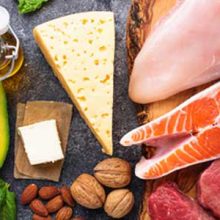Discover Why You are Not Losing Weight on the Keto Diet
The ketogenic diet has been proven to be a very effective method of weight loss. Thousands of people all over the world have tried it and the results have been amazing.
It’s not as stringent and unforgiving as the paleo diet, but it’s also not as lenient as the Mediterranean diet. There are a few rules to follow with the ketogenic diet to ensure that you lose fat.
Usually, when people face setbacks with the keto diet, they’re probably flouting one of the rules without realizing it. In this article, we’ll look at a few reasons why your weight loss is not happening even though you’re on a keto diet.
1. You’re not in ketosis
This is probably the most obvious reason and also the one most overlooked. Ketosis is a situation where the body is burning fat for fuel instead of glucose. That’s what makes this diet so powerful.
People who are not on the ketogenic diet usually need to cut their carbohydrates and adopt other methods such as intermittent fasting in order for the body to burn its fat stores.
With the keto diet, since most of your diet will be fat, your body will realize that it has no shortage of fat, and it will burn off your fat stores more readily. You should always check if you’re in ketosis to ensure that your body is in fat-burning mode.
2. You’re at a caloric surplus
This is another common slip up. Even with the best diet on the planet, if you’re eating more calories than you expend, you will gain weight, or you won’t see any change on the scale.
You must be at a daily caloric deficit of 500 calories. Once you do this, your body will shed the fat fast.
3. You’re eating too much carbs and/or protein
The keto diet is a fat-based diet. The majority of your calories have to come from fat. This is not as easy as it sounds. Most people are so used to diets high in carbs and protein that making a switch to a diet high in fat is quite a challenge.
Sneaking in a few carbohydrates or proteins can affect ketosis. Trying to achieve a state of ketosis requires a few conditions to be in place. Even a slight error on your part can take you out of ketosis and halt your fat loss. So, you must be aware of what you’re eating.
Aim for 20 grams of carbs per day, and only 20 percent of your calories should come from protein. The rest of the calories come from fat. This is the general requirement to achieve ketosis.
4. Leptin resistance
This is a condition that can be fixed by getting sufficient sleep, de-stressing, reducing inflammation by cutting out sugar, and so on. It’s just a matter of giving your body time to adjust to the keto diet.
Once your leptin sensitivity is restored, your body will know how much to eat, and how much fat to shed, and so on. It just needs time to adapt. So, be patient.
Most issues related to failing with the keto diet can be traced back to one of these 4 issues. Analyze why you’re not losing the weight before you think of quitting.
Track your foods, measure your food portions, test, and see if you’re on ketosis, and give your body time to get used to the diet before it starts torching the fat.
“Patience and persistence are an absolute must as you pursue ketosis.” – Dr. Eric Westman


